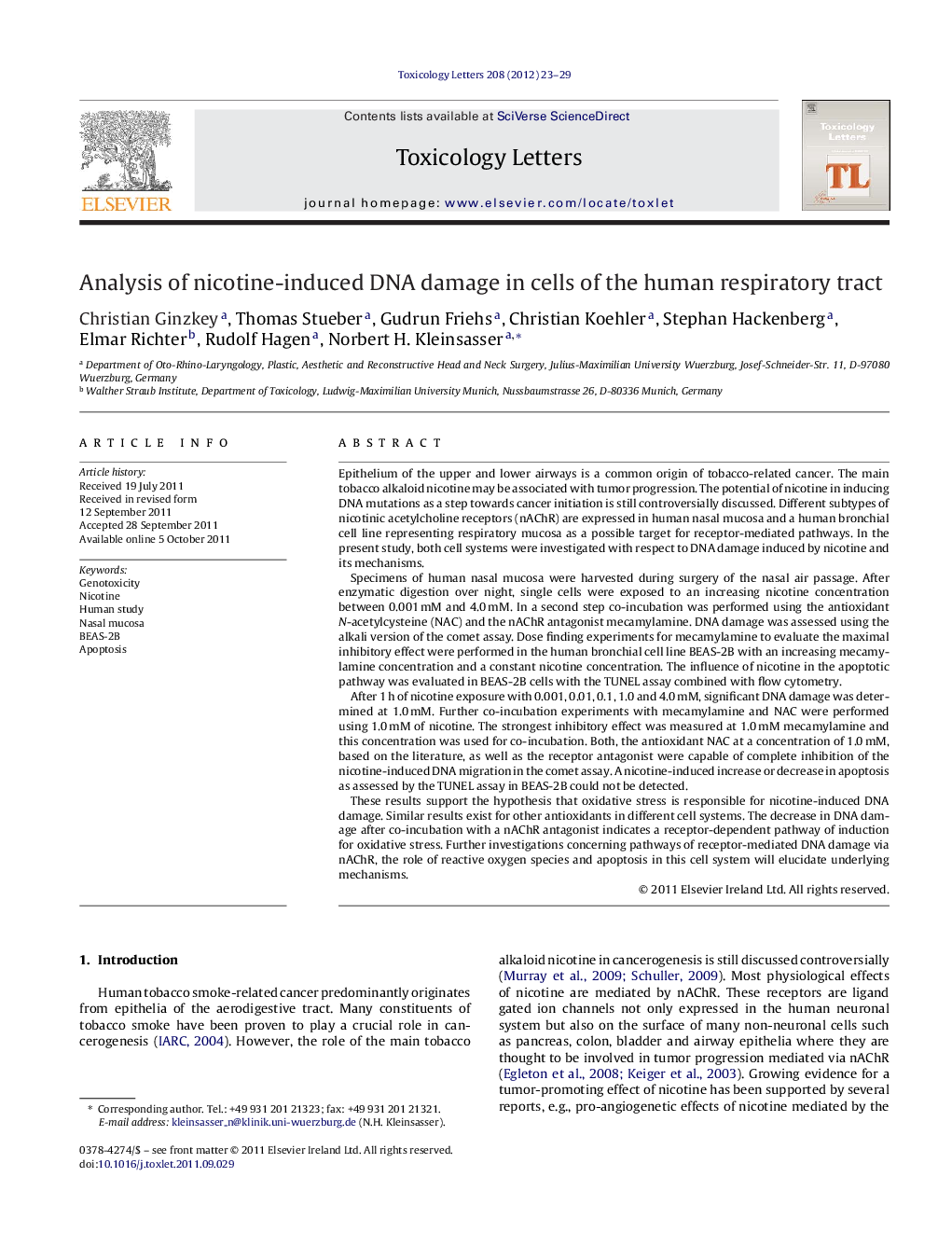| Article ID | Journal | Published Year | Pages | File Type |
|---|---|---|---|---|
| 2599976 | Toxicology Letters | 2012 | 7 Pages |
Epithelium of the upper and lower airways is a common origin of tobacco-related cancer. The main tobacco alkaloid nicotine may be associated with tumor progression. The potential of nicotine in inducing DNA mutations as a step towards cancer initiation is still controversially discussed. Different subtypes of nicotinic acetylcholine receptors (nAChR) are expressed in human nasal mucosa and a human bronchial cell line representing respiratory mucosa as a possible target for receptor-mediated pathways. In the present study, both cell systems were investigated with respect to DNA damage induced by nicotine and its mechanisms.Specimens of human nasal mucosa were harvested during surgery of the nasal air passage. After enzymatic digestion over night, single cells were exposed to an increasing nicotine concentration between 0.001 mM and 4.0 mM. In a second step co-incubation was performed using the antioxidant N-acetylcysteine (NAC) and the nAChR antagonist mecamylamine. DNA damage was assessed using the alkali version of the comet assay. Dose finding experiments for mecamylamine to evaluate the maximal inhibitory effect were performed in the human bronchial cell line BEAS-2B with an increasing mecamylamine concentration and a constant nicotine concentration. The influence of nicotine in the apoptotic pathway was evaluated in BEAS-2B cells with the TUNEL assay combined with flow cytometry.After 1 h of nicotine exposure with 0.001, 0.01, 0.1, 1.0 and 4.0 mM, significant DNA damage was determined at 1.0 mM. Further co-incubation experiments with mecamylamine and NAC were performed using 1.0 mM of nicotine. The strongest inhibitory effect was measured at 1.0 mM mecamylamine and this concentration was used for co-incubation. Both, the antioxidant NAC at a concentration of 1.0 mM, based on the literature, as well as the receptor antagonist were capable of complete inhibition of the nicotine-induced DNA migration in the comet assay. A nicotine-induced increase or decrease in apoptosis as assessed by the TUNEL assay in BEAS-2B could not be detected.These results support the hypothesis that oxidative stress is responsible for nicotine-induced DNA damage. Similar results exist for other antioxidants in different cell systems. The decrease in DNA damage after co-incubation with a nAChR antagonist indicates a receptor-dependent pathway of induction for oxidative stress. Further investigations concerning pathways of receptor-mediated DNA damage via nAChR, the role of reactive oxygen species and apoptosis in this cell system will elucidate underlying mechanisms.
► DNA damage was dose dependent as assessed in the comet assay. ► Co-incubation with the antioxidant NAC showed significant decrease of DNA damage. ► DNA migration was reduced significantly by the nACh receptor blocker mecamylamine. ► No influence of apoptotic activity could be shown in the TUNEL assay.
